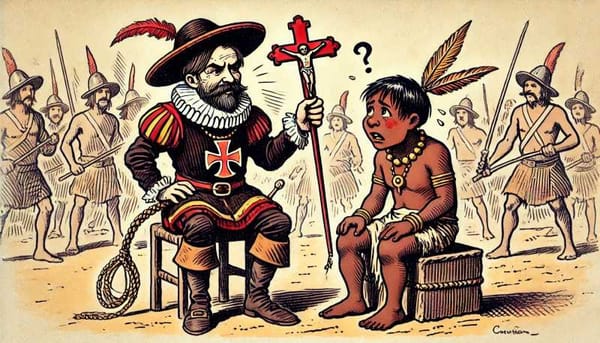Sustainability and environmental friendliness, the dilemma facing audiovisual heritage
There is an urgent need to explore sustainable ways to minimize the environmental impact of preservation. A large amount of content recorded on magnetic media has not yet been digitized and could be lost. There are about 1,500,000,000 sound and audiovisual recordings in Mexico.

It is urgent to explore sustainable ways to minimize the environmental impact caused by preservation. There is a large amount of content recorded on magnetic media that has not yet been digitized and could be lost. In Mexico, there are about 1,500,000,000 sound and audiovisual recordings. World Day for Audiovisual Heritage is commemorated on October 27.
Despite the undeniable benefits of technology, the digital preservation of sound and audiovisual heritage requires uninterrupted use of energy, which represents one of the factors causing global warming, a condition to which is added the obsolescence of the computer equipment used for it and that becomes technological waste. It is estimated that only 30 percent of the historical memory has been digitized.
The specialist of the Institute of Library and Information Research (IIBI), Perla Olivia Rodríguez Reséndiz, points out: "We are at a juncture, we know that there is a large amount of content recorded on magnetic media that has not yet been digitized and could be lost if the content is not transferred before 2025".
The Ph.D. in Documentation Sciences from the Complutense University of Madrid, warns that in Mexico there are approximately 1,500,000,000 sound and audiovisual recordings in different radio and television stations and public institutions. It is estimated that approximately 30 percent of this historical memory has been processed. Notwithstanding this progress, if the technology and economic resources are not permanently available in the coming years, they could be lost. This work is not a given; it must be maintained sustainably.
In many cases, digitized collections lack a permanent budget for their perpetuation. When talking about digitization we must think of two major components: the technology to transfer and reproduce the contents and the necessary equipment for storage and protection.
These are some of the data we have obtained through various investigations carried out at IIBI in 2020 and through the Ibero-American Network for Digital Preservation of Sound and Audiovisual Archives (RIPDASA), coordinated by UNAM and formed by nine countries within the framework of the Ibero-American Program of Science and Technology for Development (CYTED).
"We have made a first approach to the state of analog materials that have been lost, as well as those that are about to be lost in Ibero-America," she warned. Therefore, among the challenges are: the digitization of analog supports, the systematic collection of materials of digital origin, and the creation of archives, says the also master in Political Science.
On the occasion of World Day for Audiovisual Heritage, which is commemorated on October 27, she points out that UNAM has played a leading role in the history of this work. An example of this is the Filmoteca ("Film Library") created in 1960. Radio UNAM is also a national reference in the preservation of its radio archive. More than a decade ago it undertook systematic, clear, and forceful actions. Also, the research centers of the National University keep unpublished recordings resulting from scientific work.
Environmental impact
In terms of research, the IIBI incorporated an unprecedented line in Latin America: Digital Sound Preservation, in charge of the researcher, which allows exploring the topic, sharing and creating knowledge networks especially in Latin America, which has spread to other universities, such as the Andean Simón Bolívar, from Ecuador, with which UNAM will hold from November 10 to 13 the IV International Congress on Digital Archives Climate change and digital sound and audiovisual preservation.
During this meeting, the impact of the technologies used will be analyzed. The aim is to encourage the design of sustainable initiatives. Also, to examine from a multidisciplinary perspective how digital archives face climate change.
Perla Rodriguez emphasizes that these repercussions are little addressed worldwide and involve the intensive use of technologies; however, analog preservation also involves energy to maintain the media in storage vaults, which require stable temperature and humidity systems 24 hours a day, 365 days a year. The maintenance of the servers of the digital mass storage and management systems also means electricity costs.
The university emphasizes that the equipment becomes obsolete in a period of five to ten years, depending on the storage device in question. "Therefore, we must explore ways that are sustainable, long-term and that minimize the effect that digital preservation could have on the generation of technological waste and the environment concerning climate change".
For example, content searches, in general, require connecting several databases and generating CO2 that impacts the planet. This issue has been studied from the perspective of large data centers, but we must also analyze the impact it has on sound and audiovisual archives, given that precisely one of the raisons d'être of these institutions is for them to have visibility and be consulted, Rodríguez Reséndiz points out.
Expiration in technology
Perla Rodríguez states that the 21st century is characterized by the creation and proliferation of digital documents whose risk of loss is greater than that of analog documents because their permanence depends on a single medium and they need to be systematically migrated from one platform to another. Faced with this phenomenon, which we cannot ignore, the institutions responsible for memory, authorities, and archivists must be aware that continuous work is required, providing constant economic resources and a long-term vision; "however, this is difficult to achieve," said the expert.
She explains that audiovisual archives -film, video, and sound- are part of the heritage of humanity and relevance to society because they constitute the testimonies of contemporary history; they are tangible because, in the case of the analog supports that were produced until the last century, they were created in different formats such as open-reel tapes, vinyl records, cassettes, U-Matic (the first videocassette format to be put on sale), Betacam tapes, VHS and nitrate films, among others.
Moreover, it is a legacy that safeguards the thought of humanity, which sometimes we do not find in books, we know that the printed document has been one of the main vehicles of knowledge; however, in the current era, there is a proliferation of digital sound content and with topics of contemporary relevance. Finally, this anniversary is fundamental for archives, because since 2005 the importance of sound and audiovisual archivists as guardians of this heritage that characterizes the modern era has become visible.




